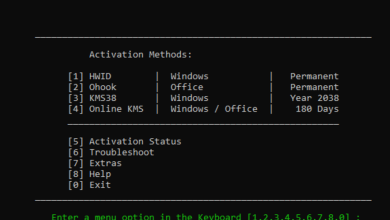Windows Error Code “0xc0000001” and Ghost Error “Recover Operation Failed”

I. Understanding Windows Error Code “0xc0000001”
Definition and Implications
Common scenarios leading to this error include:

- Hardware Changes: Installing or removing hardware components can lead to misconfigurations.
- Corrupted System Files: If critical system files are corrupted, the boot process can fail.
- Incompatible Drivers: A newly installed driver may not function correctly with the current Windows version.
- Malware Infections: Infections can alter system files and prevent proper booting.
- Windows Updates: Sometimes, a failed or problematic update can trigger this error.
Technical Breakdown
Potential file corruption issues that may lead to this error include:
- File System Corruption: The file system can become corrupted due to improper shutdowns, power outages, or faulty hardware.
- Missing Boot Configuration Data (BCD): The BCD is essential for Windows startup; if it is missing or corrupted, boot errors will ensue.

II. The Ghost Error: “Recover Operation Failed”
Overview of Ghost Errors

Understanding Recovery Failures
Several common reasons contribute to recovery failures:
- Inaccessible Recovery Media: If the recovery disk or USB is damaged, it may not work.
- System Resource Limitations: Insufficient resources can halt the recovery process, primarily if the system runs out of space.
- Corrupted Recovery Partition: A compromised recovery partition may fail to execute necessary tasks.
III. Identifying Underlying Causes
Boot Device Issues
Distinguishing between hardware and software problems is crucial when dealing with boot issues. Hardware failures, such as a malfunctioning hard drive or corrupted RAM, can lead to boot errors. Conversely, software problems often stem from corruption or misconfigurations.
One of the first steps is to check the boot order in BIOS. If the system attempts to boot from the wrong device (like an external USB instead of the internal hard drive), it will fail to load Windows. Ensuring that the correct boot device is prioritized can prevent unnecessary errors.
Corrupted Files and Disk Issues
Possible scenarios of corruption include sudden power failures that disrupt writes to disk or malware infections that disable essential files. Tools like the Windows Check Disk utility (chkdsk) can be invaluable in diagnosing disk health. Running comprehensive tools to assess your disk’s integrity can help uncover underlying problems that need addressing.
IV. Troubleshooting Steps
Using Event Viewer to Find Clues
Event Viewer is a powerful tool for diagnosing Windows issues. Access it by searching for “Event Viewer”
Memory (RAM) Considerations
Defective RAM can often lead to boot errors and system instability. Common symptoms of faulty RAM include random crashes, blue screens of death, and freezes. To test RAM, Windows includes the Windows Memory Diagnostic tool, which can help identify problems. If errors are detected, replacing the RAM may be necessary for restoring functionality.
V. Recovery Options
Boot Repair Tools
Windows provides several built-in recovery options, including Startup Repair and System Restore. These tools can often correct common problems that hinder the boot process. Additionally, several third-party tools are available that can provide more comprehensive recovery solutions or backup services.
Reinstallation as a Last Resort
If all else fails, reinstallation may be necessary. Before proceeding, ensure all important data is backed up using external drives or cloud storage solutions. When conducting a reinstall, it is critical to download the latest version of Windows and create installation media to avoid potential errors during the process.
VI. Prevention Strategies
Regular Backups
Maintaining regular backups is essential for mitigating data loss. Solutions such as cloud storage options (e.g., Google Drive or Dropbox) and external hard drives should be utilized to create routine backups. Automating this process can ensure important files are always secure.
System Maintenance Practices
Routine checks, software updates, and monitoring disk health can significantly enhance system stability. Utilize tools such as Disk Cleanup and Disk Defragmenter to optimize performance and reduce the risk of errors stemming from fragmentation or clutter.
VII. Conclusion
Recap of Error Management
Encouragement for Continued Learning
Continual learning about your system, keeping up with software updates, and understanding basic troubleshooting can empower users to manage their computers proactively. Equip yourself with knowledge, so you feel more confident navigating and resolving issues.
Closing Thoughts on Computer Health
Maintaining a healthy computer system requires diligence and awareness. By implementing regular backup strategies, monitoring disk health, and understanding the implications of error codes, users can mitigate risk and enhance their computing experience. Always approach troubleshooting with patience and methodical strategies for the best outcomes.






